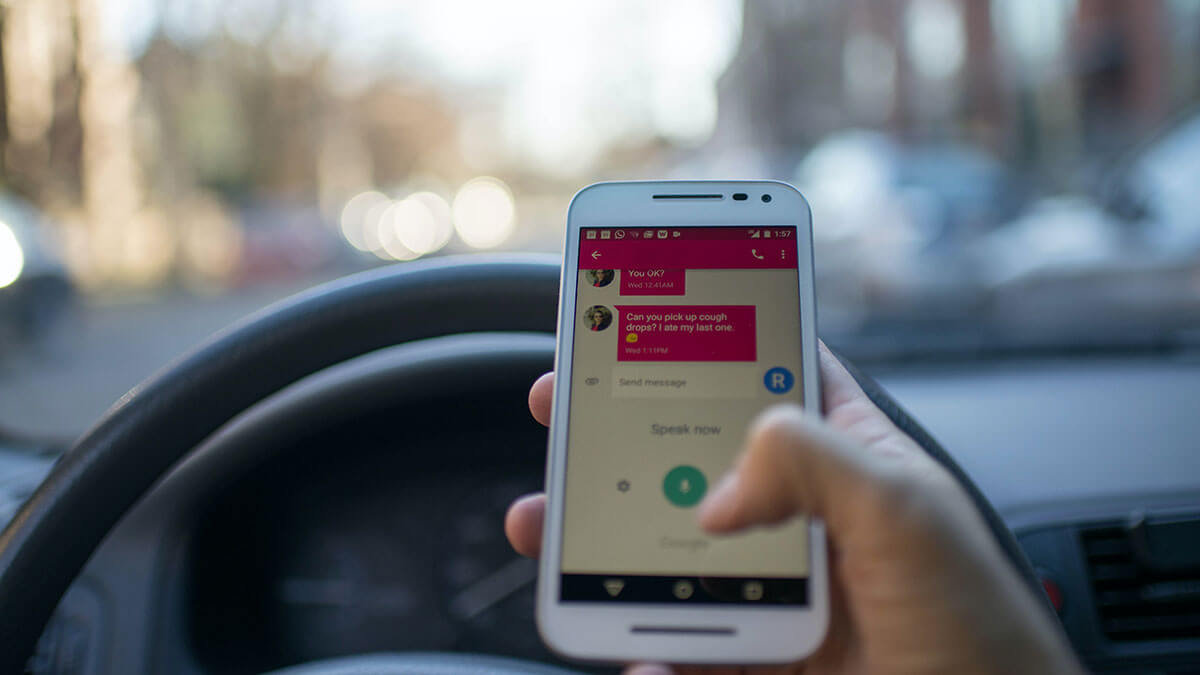
Three seconds. This is the average estimated time for an accident to take place. And it all starts from the moment a driver takes their eyes — or mind — off the road. According to the National Highway Traffic Safety Administration (NHTSA), in 2018 alone, distracted driving behaviors caused the loss of 2,841 lives.
At the same time, the National Safety Council (NSC) estimates that:
On a typical day, more than 700 people are injured in distracted driving crashes.
NOTE: We often take an interest in educating our readers on safe driving behaviors via our blog; although our content is not confined to those topics alone. All the more, because this past October was dedicated to raising awareness for road safety, by national traffic safety organizations. On one hand, we had the Distracted Driving Awareness Month, organized by the NSC. (Normally, this event takes place in April, but due to the COVID-19 pandemic, it was postponed for October 2020.) On the other, we had the launching of the NHTSA’s National Pedestrian Safety Month; an interesting coincidence.
For some time now, unsafe driving has been the main culprit for the majority of crashes in the United States. Unfortunately, traffic accidents caused by hazardous driving behaviors can have grave consequences (pun intended 😬). From bumps to smithereens, and from broken bones to permanent disabilities (even death), distracted driving is a serious problem. And when translated into dollars, the financial impact can be quite substantial.
Distracted driving: The FMCSA’s definition
According to the Federal Motor Carrier Safety Administration (FMCA):
Driver distraction is the diversion of attention from activities critical for safe driving to a competing activity. Driver distraction increases your risk of getting into a crash.
Fleet owners and fleet managers, of course, are especially concerned about their crew engaging in distracted driving behaviors; for one thing, if a fleet driver causes an accident while on the job, they can be held liable. As a result, their fleet business could bleed financially, in the long haul.
Both fleet managers and fleet drivers know that working on the road is tough. Commercial vehicle drivers have to deal with traffic, deadline pressure and, often, long hours; on top of those, saving money for the company along the way is a prerequisite. Hours and hours may pass before they can stop for a (much-needed) break. As a consequence, they can fall prey to distractions.
So, what are those distractions that can cost your fleet company money? Read on to find out!
10 costly distracted driving behaviors
- Texting or talking on the cellphone. The NHTSA states on the matter: “Far too many drivers succumb to the deadly — and often illegal — temptation that has emerged as one of the most common forms of distracted driving: texting.”
- Eating and/or drinking. Even though food and drink may seem harmless, unfortunately, they have the potential to cause serious accidents. No wonder why so many states charge with tickets and fines for eating or drinking while driving.
- Drowsy driving. A tired driver should not be allowed to drive, to begin with. If their drowsiness has to do with their long shifts, as a manager, you must take care of this problem; you do not want them overworked!
- Forgetting the simplest thing: the seat belt. Sadly, it is a pitfall even the most experienced drivers fall into, sometimes. Before realizing they forgot to fasten their seat belt, tadaa; a traffic cop pulls them over (and that’s the best-case scenario).
- Smoking. You know what they say; “where there’s smoke, there’s fire”, and your business does not have money to burn!
- Tinkering with the radio or the AC. Again, distraction = destruction.
- Similarly, looking up directions on a GPS device or a map.
- Talking to passengers, or other drivers, while on the move. There is a time for everything; a time to talk, and a time to drive; you cannot do both.
- Grooming. Apparently, finger-combing unruly hair or beard — and pinky fingernail-flossing — in front of the rear-view mirror, can kill you.
- Last but not least: gawking at objects, people, or events along the road. The only thing you should be staring at is the road.
How do distracted driving behaviors affect your bottom line?
Truth be told, vehicle accidents caused by heedless driving conduct, cost companies billions every year. The Advocates for Highway and Auto Safety reported that:
[…] crashes in which at least one driver was identified as being distracted imposed an economic cost of $40 billion in 2010.
The financial consequences from risky driving are sizable, to say the least. If you allow or require your drivers to use hand-held mobile phones while driving, you will literally pay for this. To emphasize, the civil penalties for such an act can cost you up to $11,000!
Moreover, research funded by the Network of Employers for Traffic Safety (NETS) made a shocking finding:
In 2013, U.S. traffic crashes cost employers $47.4 billion in direct crash-related expenses, which includes medical care, liability, lost productivity and property damage.
The $25.17 billion out of the aforementioned expenses are credited to on-the-job incidents.
Alas, costs do not end here for you dear fleet owner! Accidents caused by a distracted fleet driver can also increase your insurance rates by as much as 41%. In plain words, this percentage may be hundreds — even thousands — of dollars on your annual premium.
If you wanna do the math yourself, you can use this Cost of Crashes Calculator tool.
But first, safety: Solutions for distracted driving behaviors
Laser-focused attention is an absolute must when driving — let alone when driving a commercial vehicle. As such, a fleet manager without the right vehicle management system, cannot efficiently detect distracted driving in time; that is to say, to thwart undesirable circumstances.
Luckily, with fleet vehicle telematics, you can take preventative measures that can immediately minimize fleet risk and liability. By using both vehicle management software and ongoing driver coaching, you can help your fleet company reach new heights.
So, how can you make the most of these tools, to identify careless drivers, reduce liability, and protect your employees?
Fleet vehicle telematics is your best buddy
Vehicle telematics provides critical information on vehicle status and driver conduct. With vehicle management software, you can generate preset parameters on erratic driving behaviors, such as aggressive acceleration and hard braking.
By doing so, you will get real-time alerts whenever these preset parameters are violated. You will also receive automated reports that analyze patterns and risks. This way, you can set up a tailor-made training program for your drivers.
Basically, not only do you establish safe driving across your fleet, but also, you gain control over your operating expenses; not to mention, low insurance rates. ✌
Ongoing training is key for a successful fleet business
This stream of information from vehicle telematics will help you identify areas of focus for your road-safety training program. Hence, team. On this account, accidents among your fleet employees will be reduced, and you’ll be contributing to the national road safety.
Should you need any information, material, or any kind of resources to help you in this endeavor, you can check these:
- Guideline booklet: Compiled by NETS, NHTSA and OSHA, to help reduce traffic-related accidents
- NETS website: There you will find an array of tools that can help in your road safety initiatives; also, you can read more here and here
- NSC free safe driving kit for employee education
- NSC Defensive Driving Courses and Driver Safety Training
In safe hands
You may not realize it when you get behind the wheel, but driving — on its own — is a risky act. If you add cellphones, fatigue, and food in the equation, then the chance of an accident happening increases exponentially. That said, the above applies even more to fleet drivers, who spend many hours on the road, every day.
Fortunately, fleet owners have all the means available to keep their fleet employees safe and focused. Βy implementing a vehicle management system and an ongoing training program, they can protect their drivers, other drivers, and their fleet business from unfavorable situations; not to mention innocent bystanders.
Now that you know how, don’t hesitate to bring a positive change; the ball is in your court!


